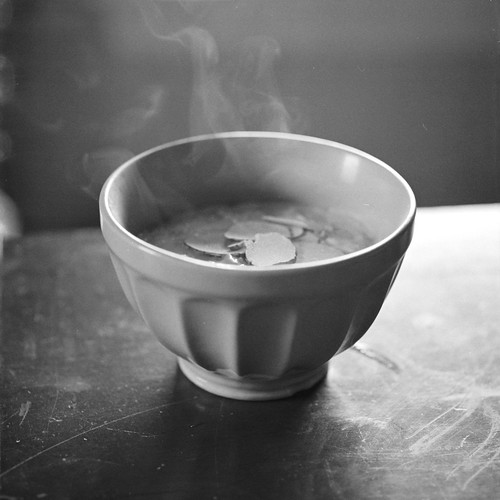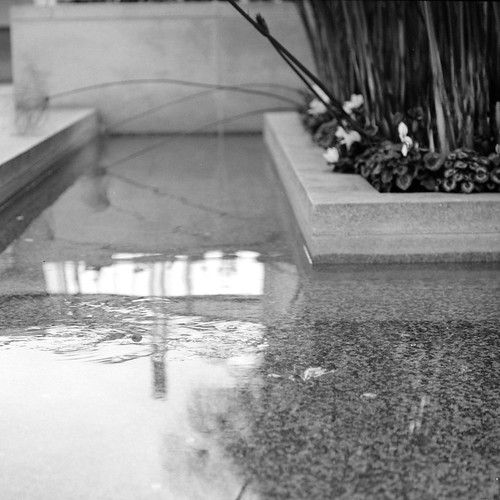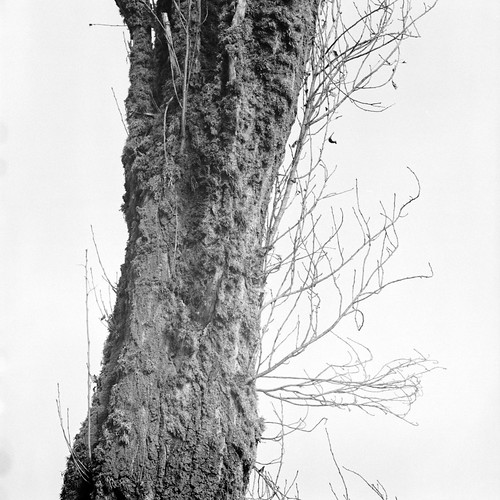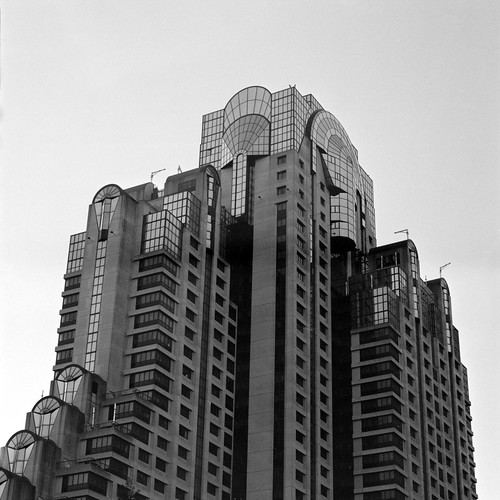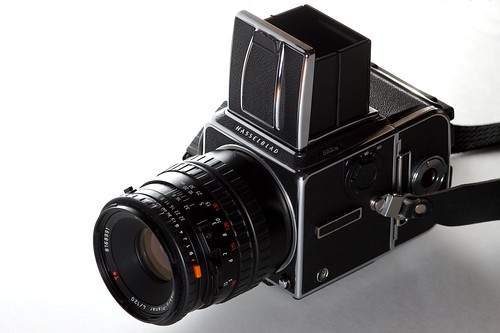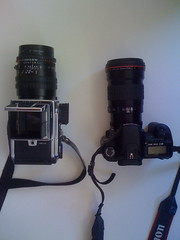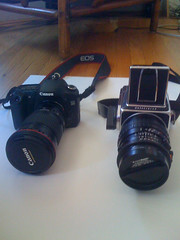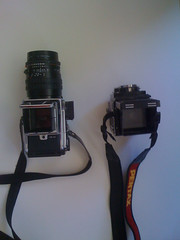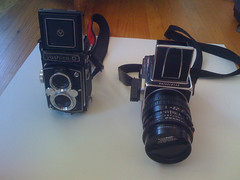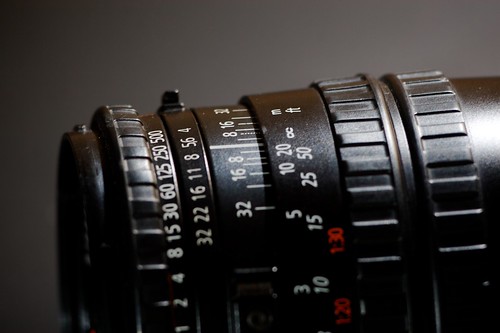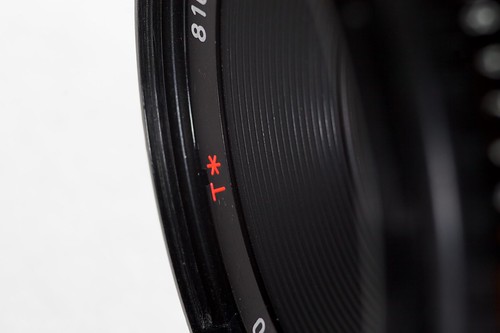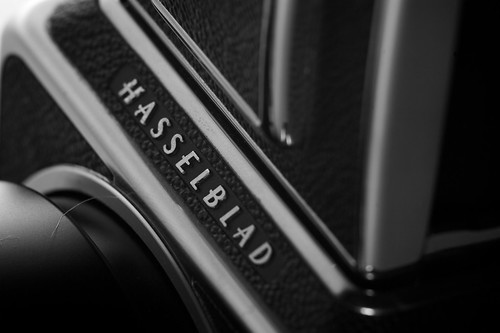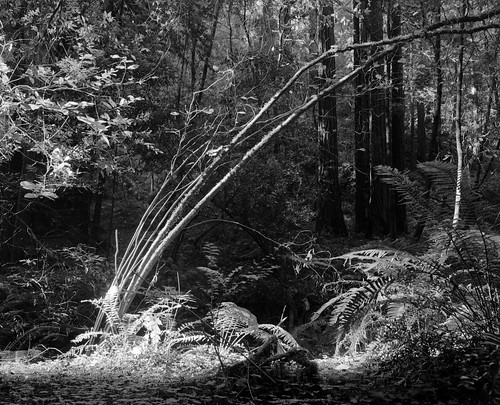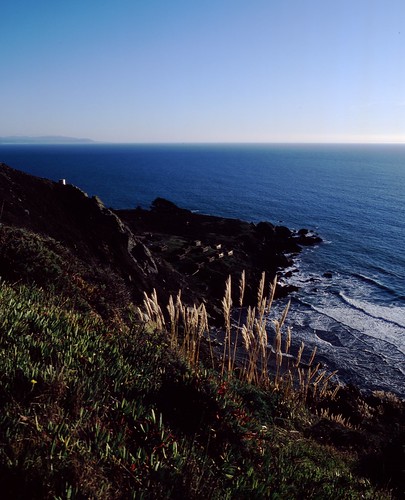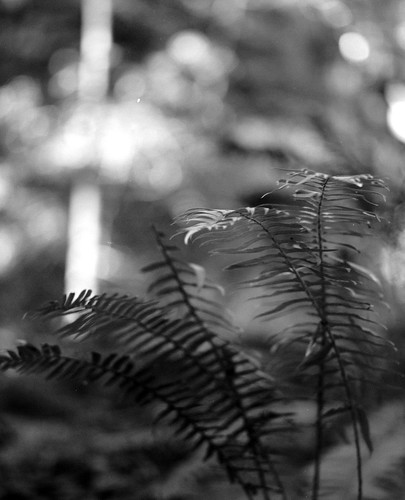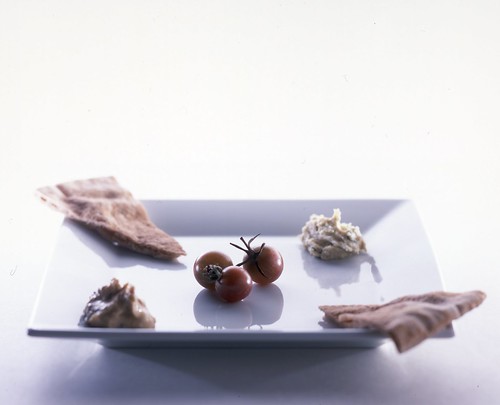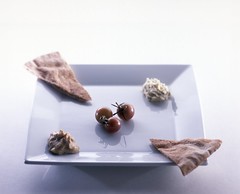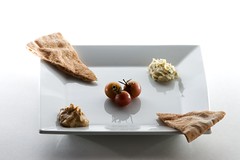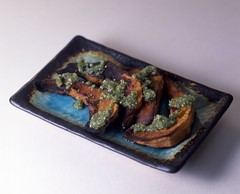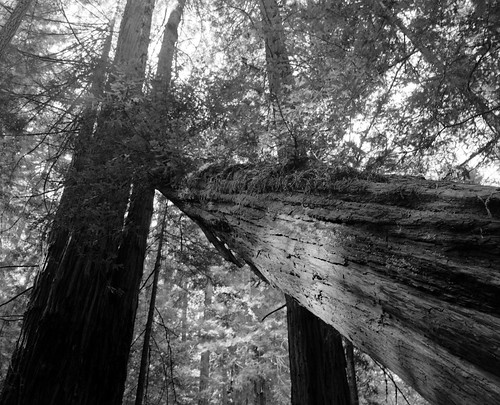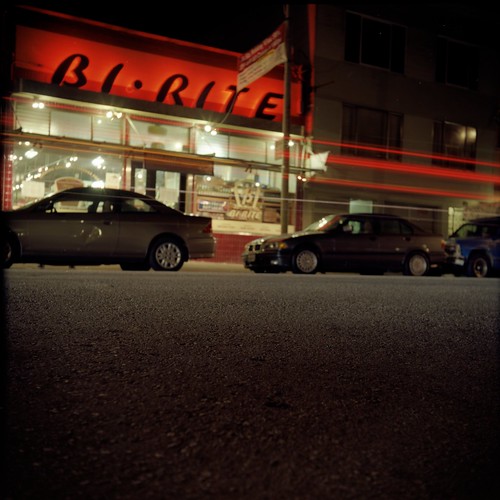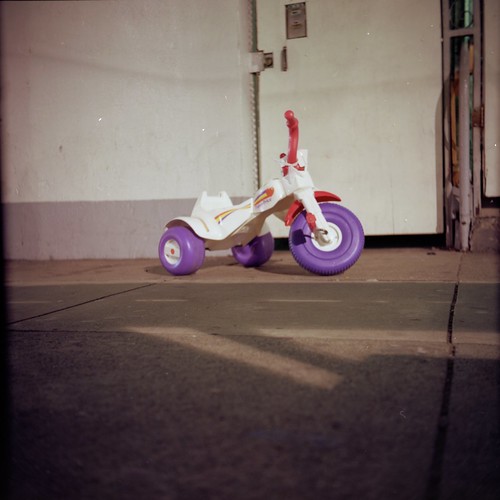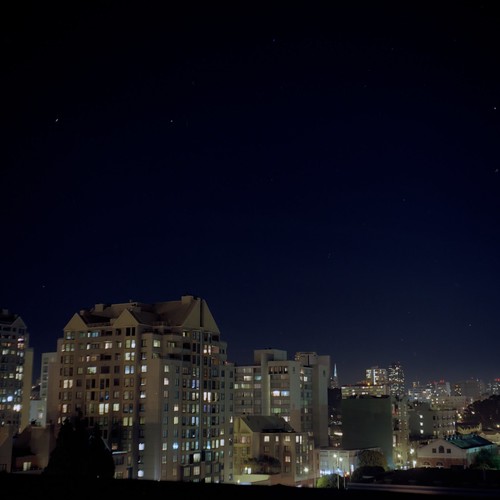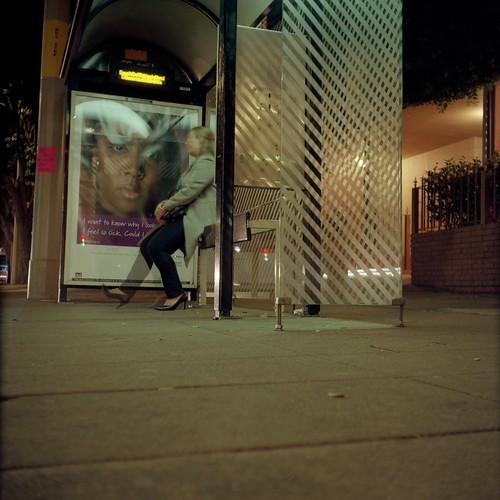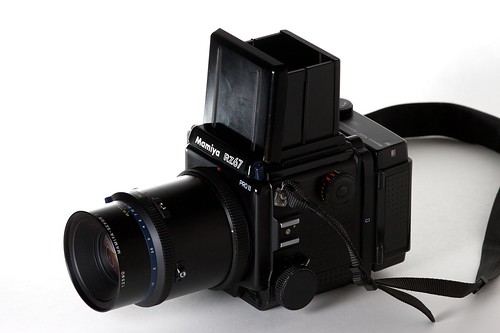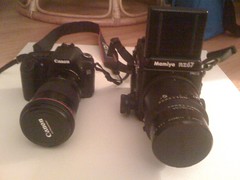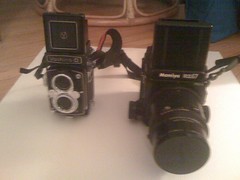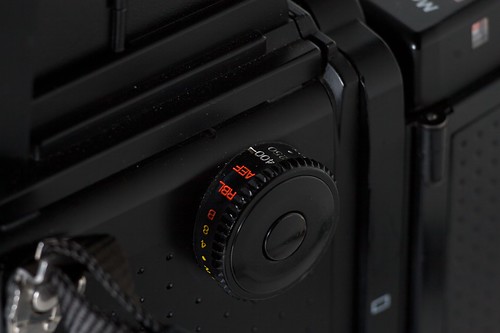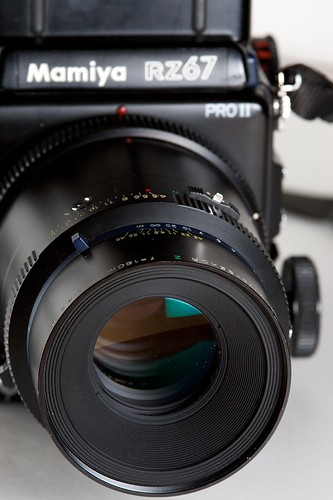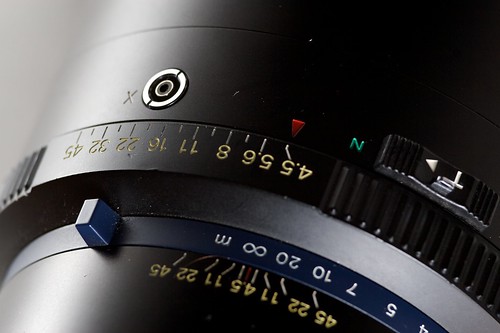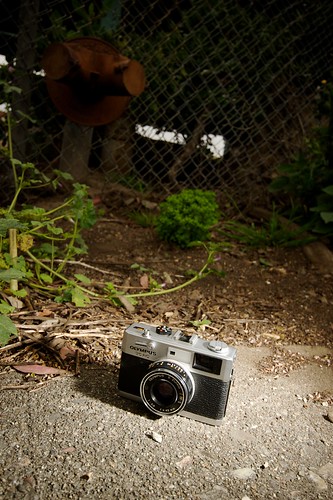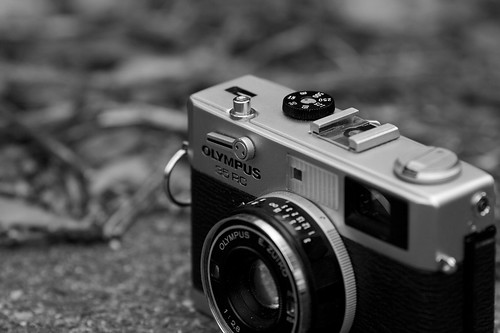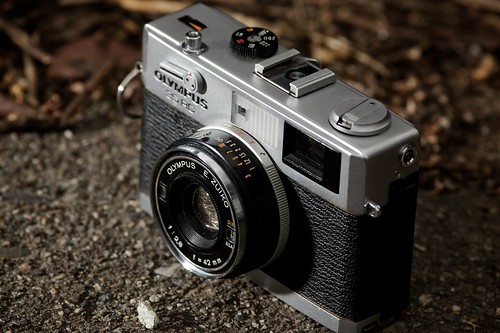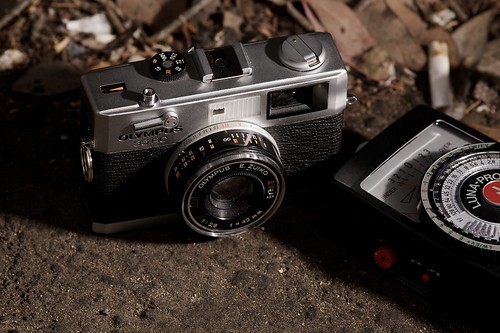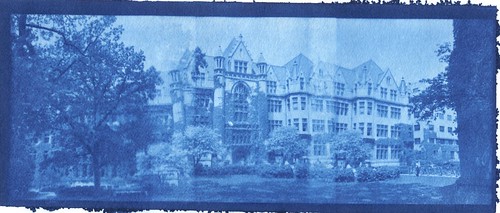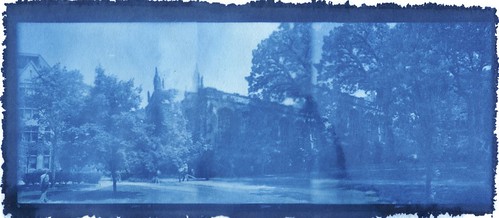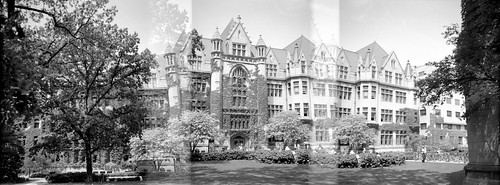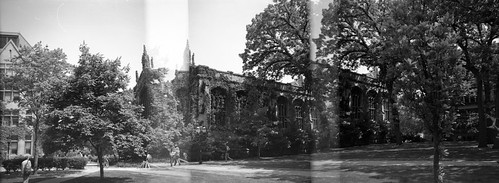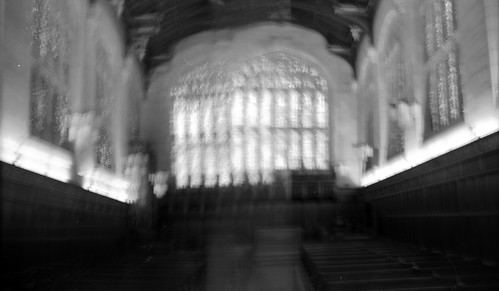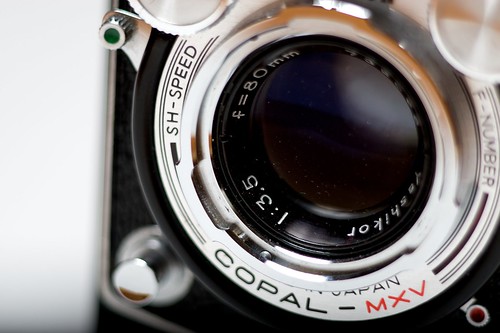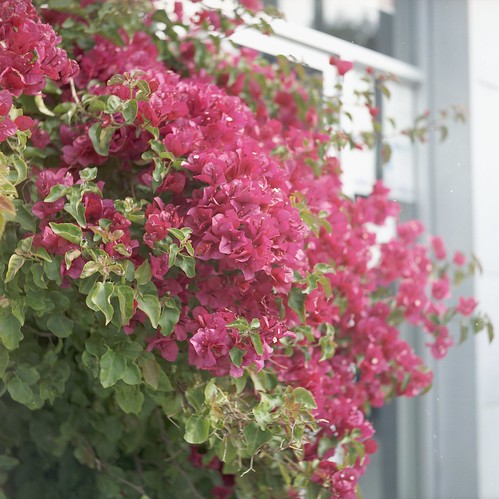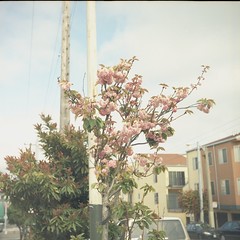This continues part 1 of my discussion of the Hasselblad 503C/W. I didn't take as many rolls with this as with the Mamiya RZ67, since I didn't get to take any trips with it. Thus all the images are from San Francisco, or from food/camera photography in my apartment. I shot 1 roll of HP5+ at 1600, 1 roll of HP5+ at 400, and 1 roll of Provia 100F. Because I was hand-holding the camera in some very low light situations (hence the 1600 HP5+) I had a little less luck than with the RZ67 images, but still got plenty of good frames.
In terms of the lenses used, all of them worked well, although I had a strong preference for the 120mm f/4 Makro-Planar (as I suspected). The 150mm f/4 Sonnar was my second favorite, which is again not a surprise. I didn't rent a wide-angle lens this time, preferring to compare with the normal lens instead. If were to have to use only one lens with this camera, it would have to be the 120mm, or possibly the 150mm with extension tubes or close up filters.
For the food and product photography, the 120mm worked very nicely. As with the RZ67 + 180mm, to get any closer I would need tubes or filters, but without these it can just about fill the frame with a plate, which would be what I need. I also didn't find any exposure compensation needed at the closest focus distance; I shot the food pictures in 0 and +1/2 EV pairs, and the 0 versions worked fine.

Otsu Soba Noodle Salad (Provia); Hasselblad 503C/W, 120m f/4 Makro-Planar, Fuji Provia 100F, Canon 430EX, Lumiquest SB-III, LumoPro LP120
Provia continues to display its blue color cast in the shadow areas, which works well for pictures of the high-tech DSLR. For the food, since there wasn't a white background, I could "correct" it, resulting in a frame much warmer than the more neutral DSLR versions.
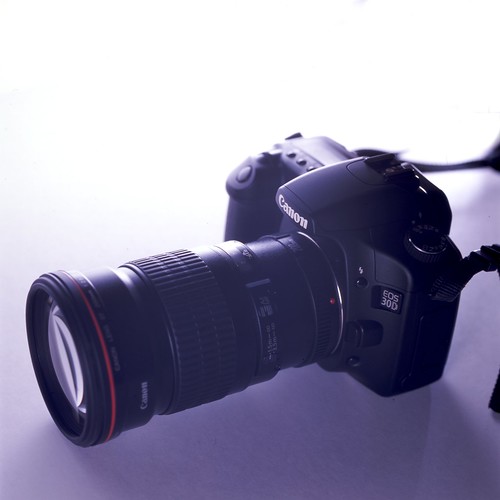
Canon 30D 2 (Provia); Hasselblad 503C/W, 120m f/4 Makro-Planar, Fuji Provia 100F, Canon 430EX, Lumiquest SB-III, LumoPro LP120
In terms of comparison to the Mamiya RZ lenses, at least to my eyes, there's not much in it. Along with the extra 1cm in the 6x7 negative (it doesn't sound like a lot, but 6x7 negatives do look much larger than 6x6), I certainly wouldn't choose the Hasselblad for image quality reasons, especially not if wanting to print rectangular. There's certainly nothing wrong with the lenses, but neither is there anything that makes me go "wow". I feel like all the frames I took with them would have been just as good with the RZ lenses. The reason to choose the Hasselblad, for me, would be the size/weight savings. Two things are making me prefer the Mamiya, though. The first is the price, which even used, is high for the Hasselblad system. The second is the close focus issue (the 120mm would solve this problem for me, but again, $$$). To take price out of the equation, a Bronica SQ system is comparable to the RZ67 system, and has some cheaper lenses that focus fairly close. However, I'm still not sure that the size/weight savings over a minimal RZ67 system would make it worth it; a rangefinder system is much more portable than either SLR system, and a 645 SLR system would also be fairly small. I feel like if I'm going to carry a medium format SLR system, it may as well be 6x7.
In summary, the RZ67 is still my top choice for a medium format system. I'm also planning to make a slight change in my rental plans, and not rent the Mamiya 7 system; the prices for both the Mamiya 6 & 7 systems are such that I don't really want to consider them. Instead, I'll move on to the Fuji rangefinders (and possibly try a GA645 as well as the GW/GSW series), and then make one very different comparison: 4x5. I don't think I'm ready to give up handholding, and work purely from a tripod, but who knows? I should at least try it. Finally, all the photos from my rental can be seen in this Flickr set.
